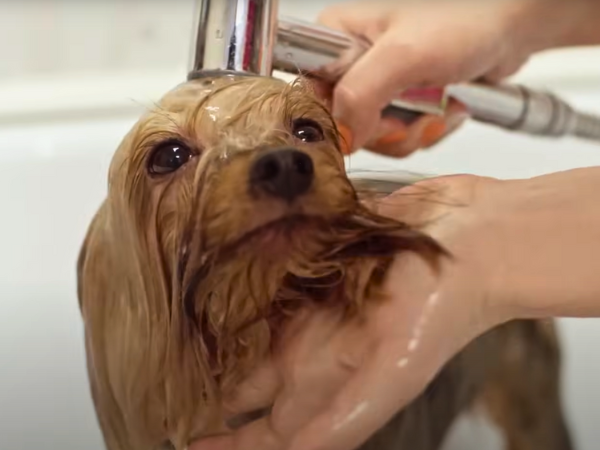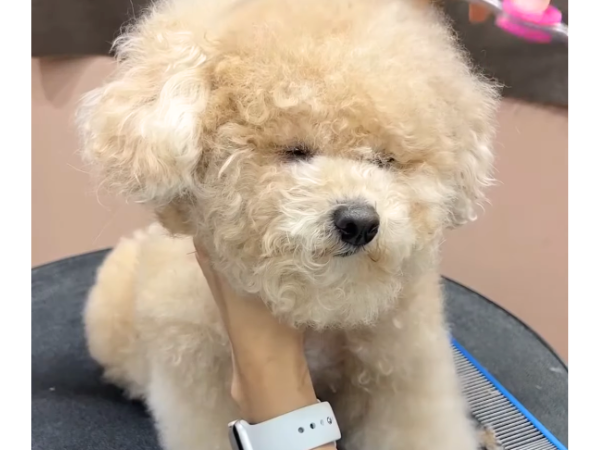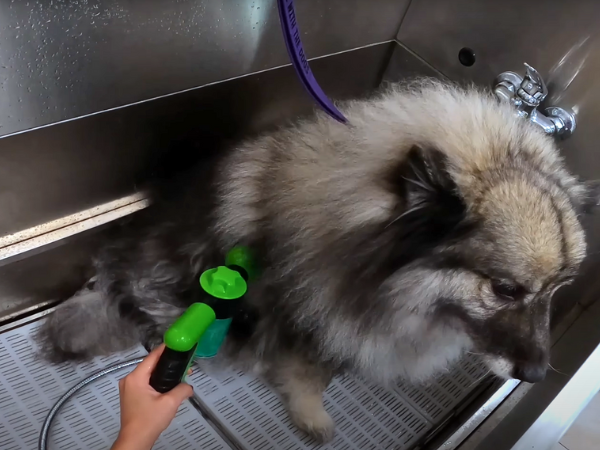Hypoallergenic dogs are often seen as the perfect solution for allergy sufferers, but there’s more to know than just “low-shedding.” From their unique coats to how they affect allergies and what daily care looks like, these breeds come with their own set of truths.
Shedding And Allergies: Not The Same Thing
Hypoallergenic dogs shed hair just like other dogs. Their hair may be finer or less visible, but shedding still happens. The key is that these dogs produce less dander. Dander causes allergic reactions, not the hair itself.
Here are some facts about shedding and allergies in hypoallergenic dogs:
- Shedding: Dead hair that falls off naturally.
- Dander: Tiny skin flakes that come off with hair and skin.
- Allergies: Immune responses to dander, not hair.
Even dogs labeled hypoallergenic can shed. Their hair may get caught in curly or dense fur. This traps dander and reduces how much spreads in the air.
The Truth About “Hypoallergenic”
“Hypoallergenic”is not a scientific label. It is mainly a marketing term used by breeders and sellers. No dog is 100% allergy-free. Allergies come from proteins in dog saliva, skin flakes (dander), and urine. These proteins vary among dogs but are present in all breeds.
Lower shedding means less dander is spread. Some breeds shed less hair and skin flakes. This can reduce allergen exposure but does not eliminate it. The breed’s coat type is the key factor in how much dander spreads.

Dander: The Real Culprit
Allergic reactions to dogs come mainly from dander, not the fur itself. Dander carries proteins that cause reactions. These proteins come from a dog’s skin, saliva, and urine. When dogs lick themselves, the proteins spread onto their fur.
Dander sticks to furniture and carpets, making it hard to remove. It stays in the air and on surfaces, causing continuous exposure for allergy sufferers. This explains why some people react even if a dog is not shedding much fur.
- Dander is microscopic: It is much smaller than fur and can stay airborne for hours.
- Proteins in saliva and urine: Allergens are not only on the fur but also in dog saliva and urine.
- Furniture and carpets: Dander clings strongly to soft surfaces, increasing exposure.
Allergy management must focus on controlling dander, not just shedding fur. Regular cleaning, air filters, and grooming reduce dander levels.
The Importance Of Grooming
Regular grooming reduces allergens by removing loose hair and dander. These tiny particles cause many allergy symptoms. Brushing your dog every few days catches hair before it falls around the house.
- Regular brushing removes loose hair and dander. Use a brush suited for your dog’s coat type.
- Frequent bathing washes away allergens. Bathing stops the buildup of dander on the skin and fur.
- Use dog-specific shampoos. These shampoos clean deeply without irritating the skin.
Good grooming helps keep your home cleaner. Less hair and dander mean fewer allergens in the air and on surfaces. Regular grooming also reduces the chance of skin problems, which can increase allergen production.
Not Just About The Hair
Many people think dogs that shed less hair are safe for allergy sufferers. This is not always true. All dogs produce dander, tiny skin flakes that carry allergens. These flakes can float in the air and cause allergic reactions.
Some breeds may have allergens in their saliva, which can stick to their fur and spread around the house. Even a dog with low shedding can trigger allergies through saliva or dander.
- Dander: Main allergen source, found on skin and fur.
- Saliva: Contains proteins that cause allergies.
- Urine: Another allergen source, especially when dried.
Individual sensitivity varies. One person might react strongly to a hypoallergenic dog, while another feels fine.
Ideal Breeds For Allergy Sufferers
Low-dander producers are the best choice for allergy sufferers. Dogs that shed less dander reduce allergic reactions in the home. Breeds with hair instead of fur often produce less dander.
Examples include Poodles, Portuguese Water Dogs, Schnauzers, and Maltese. These breeds also need regular grooming to keep their coats healthy and dander minimal.
Another important factor is the type of coat. Dogs with single coats usually shed less than those with double coats. Double coats have a soft underlayer that sheds heavily, spreading more dander.
Small breeds may produce less dander overall simply because they have less skin surface. This can make a difference for allergy sufferers who want a smaller dog.

Managing Allergies Beyond The Dog
Creating a home that limits allergens is key to controlling allergic reactions. Start by improving air quality and keeping surfaces clean. Use an air purifier with a HEPA filter to trap tiny particles like pet dander and dust mites.
Vacuum often with a HEPA filter vacuum. Regular vacuuming removes pet hair and dander from floors, carpets, and furniture. Aim to vacuum high-traffic areas at least 3 times a week.
Washing your dog’s bedding and toys regularly removes allergens that stick to fabrics. Use hot water and a strong detergent to kill dust mites and clear away dander.

Choosing The Right Hypoallergenic Dog
Some hypoallergenic breeds are calm and gentle, while others are lively and need lots of exercise. Assess your activity level and living space. A high-energy dog in a small apartment may not be the best fit.
Hypoallergenic dogs still shed or produce dander, but grooming can reduce allergens. Some breeds need frequent haircuts, while others require daily brushing. Grooming impacts your time and budget.
Visit shelters or breeders and interact with different breeds. Notice how you react to the dog’s presence. This helps confirm if you can handle the dog’s allergens and personality.
Poodles As A Prime Example
Poodles have a continuously growing coat (hair) that sets them apart from many dog breeds. Unlike dogs that shed heavily, poodles shed minimally. This means they release fewer hair and dander into the environment, which helps reduce allergic reactions.
Regular grooming is essential to prevent matting and keep their coat healthy. Grooming also helps remove loose hair and dander before it spreads around the home.
- Poodles come in three sizes: standard, miniature, and toy.
- All sizes share the same hypoallergenic coat characteristics.
- Their intelligence makes training easier and strengthens the owner-dog bond.
Poodles are a popular choice among hypoallergenic dog lovers because they combine a low-shedding coat with a friendly, smart personality. Their grooming needs might require some effort, but the allergy benefits make it worthwhile for many families.
Beyond The Breeds
Allergies can develop over time, even with breeds labeled hypoallergenic. This means owners must look at the entire picture, not just the dog’s breed. Diet and skin health can impact dander, the main allergen source.
Steps to take for a holistic approach:
- Improve diet: Feed high-quality food rich in omega-3 fatty acids to support skin health.
- Regular grooming: Brush and bathe your dog often to reduce dander.
- Clean environment: Vacuum floors and furniture to remove allergens.
- Consult an allergist: Get personalized advice on managing allergies effectively.
Taking care of the dog’s overall health helps manage allergic reactions. Consult an allergist for personalized advice tailored to your situation.

